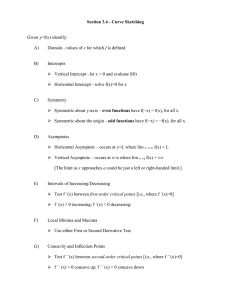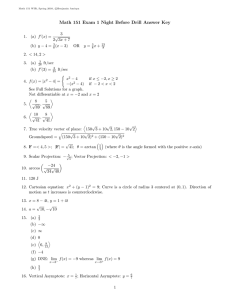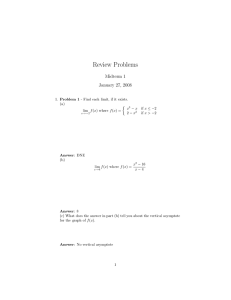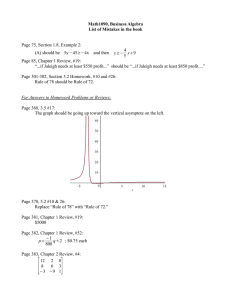Part 7 Infinite Limits
advertisement
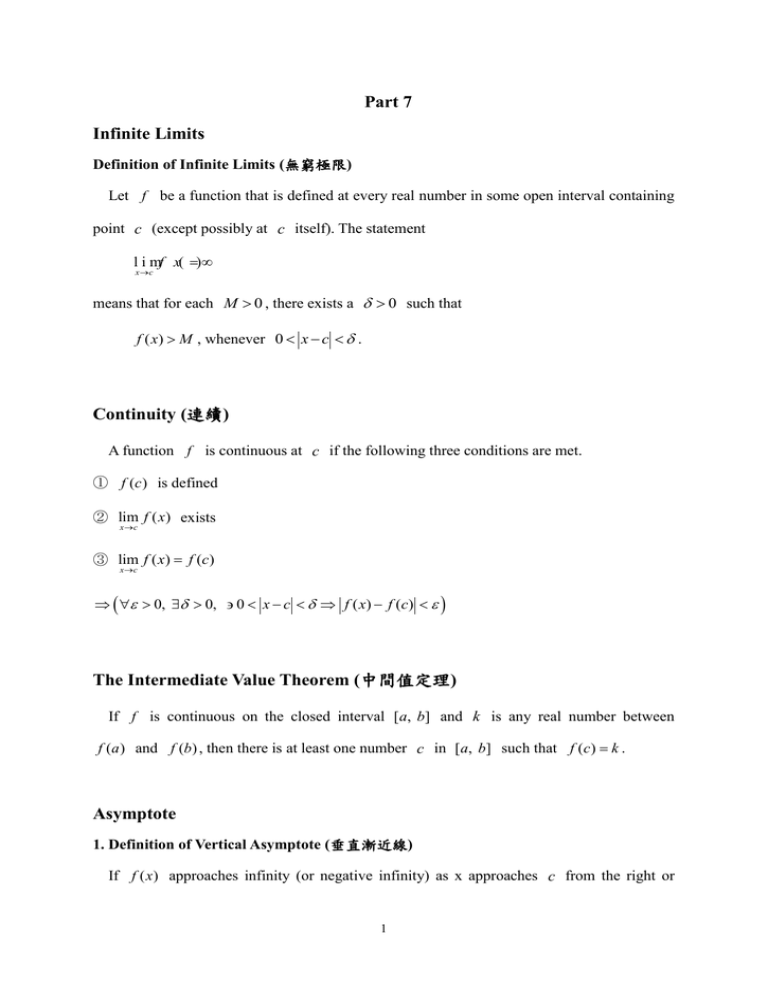
Part 7 Infinite Limits Definition of Infinite Limits (無窮極限) Let f be a function that is defined at every real number in some open interval containing point c (except possibly at c itself). The statement l i mf x( ) x c means that for each M 0 , there exists a 0 such that f ( x) M , whenever 0 x c . Continuity (連續) A function f is continuous at c if the following three conditions are met. ① f (c ) is defined ② lim f ( x ) exists x c ③ lim f ( x) f (c) x c 0, 0, 0 x c f ( x) f (c) The Intermediate Value Theorem (中間值定理) If f is continuous on the closed interval [a, b] and k is any real number between f ( a ) and f (b ) , then there is at least one number c in [a, b] such that f (c ) k . Asymptote 1. Definition of Vertical Asymptote (垂直漸近線) If f ( x) approaches infinity (or negative infinity) as x approaches c from the right or 1 the left, then the line x c is a vertical asymptote of the graph of f . (i.e., lim f ( x) or lim f ( x) ) x c x c 2. Definition of Horizontal Asymptote (水平漸近線) The line y b is a horizontal asymptote of the graph of f if l i mf x( ) b or lim f ( x) b x x 3. Definition of Slant Asymptote (斜漸近線) The line y l ( x) mx b , m 0 , is a slant asymptote of the graph of f if l i m f x( ) l x( ) or0 lim f ( x) l ( x) 0 x x 2
